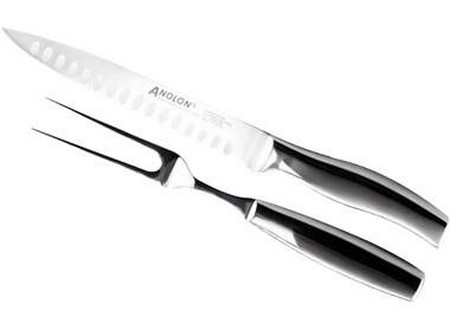Woodcarving is a form of wood sculpture with the use of hand-held cutting tools. This art depends on the sharpness of a carving knife. Using a dull carving knife may result in injury to the carver and/or a damaged finish product. Therefore, carving knives used for woodcarving should be sharpened regularly. You may do it yourself or have a Professional Knife Sharpening specialist do the knife sharpening for you.
Steps
- Select the best sharpening stone to use. There are a variety of sharpening stones, but choosing one depends primarily on what the carver prefers. Some stones can be used dry while others require the use of water or oil for lubrication before use. An example of a sharpening tool that can be used dry is a ceramic stone, which is very easy to clean with only water and soap.

- Place the carving knife against the sharpening stone with the knife on its side and lying flat.
- Ensure the back of the blade is slightly in an angle. The blade should be directed upwards and away from the stone’s surface. Maintain the contact of the blade’s edge and the sharpening stone.
- Pull the woodcarving knife back from across the sharpening stone with the blade facing the carver.
- Turn the carving knife so the sharp edge faces the carver, and then move the carving knife away from the carver. This is necessary in order for the carving knife to have a double edge.
- Repeat the last two steps five to ten times until the blade of the woodcarving knife becomes as sharp as wanted. It could take more repetition of the steps for tools that were not sharpened for a long time, just as it could be take less repetition of the steps for tools that are regularly sharpened.
- Suspend the leather strop with a nail on which to hang it. Stretch it to a point where it is unyielding; make sure that the rough side faces upward.
- Move the woodcarving knife across the rough surface of the leather strop 15 to 20 times, then turn the leather strop over and pull the knife across the smooth surface for an additional 15 to 20 times.
- Flip the knife and do the same to the other side of the blade, alternating use of the rough and the smooth side of the leather strop.
- Test the sharpness of the woodcarving knife by holding a small piece of paper on its corner.
- Let the knife’s blade meet the edge of the paper, then push the knife down. If the knife has the adequate sharpness then the paper tear, but if the paper only bends it means the knife should be further sharpened.
Tips & Warnings
- To get a fine edge, make use of two different grits of the sharpening stone.
- For tools like gouges and chisels, make use of angles that are steeper. A straight chisel needs only one edge and therefore should be pulled against the sharpening stone in one direction only.